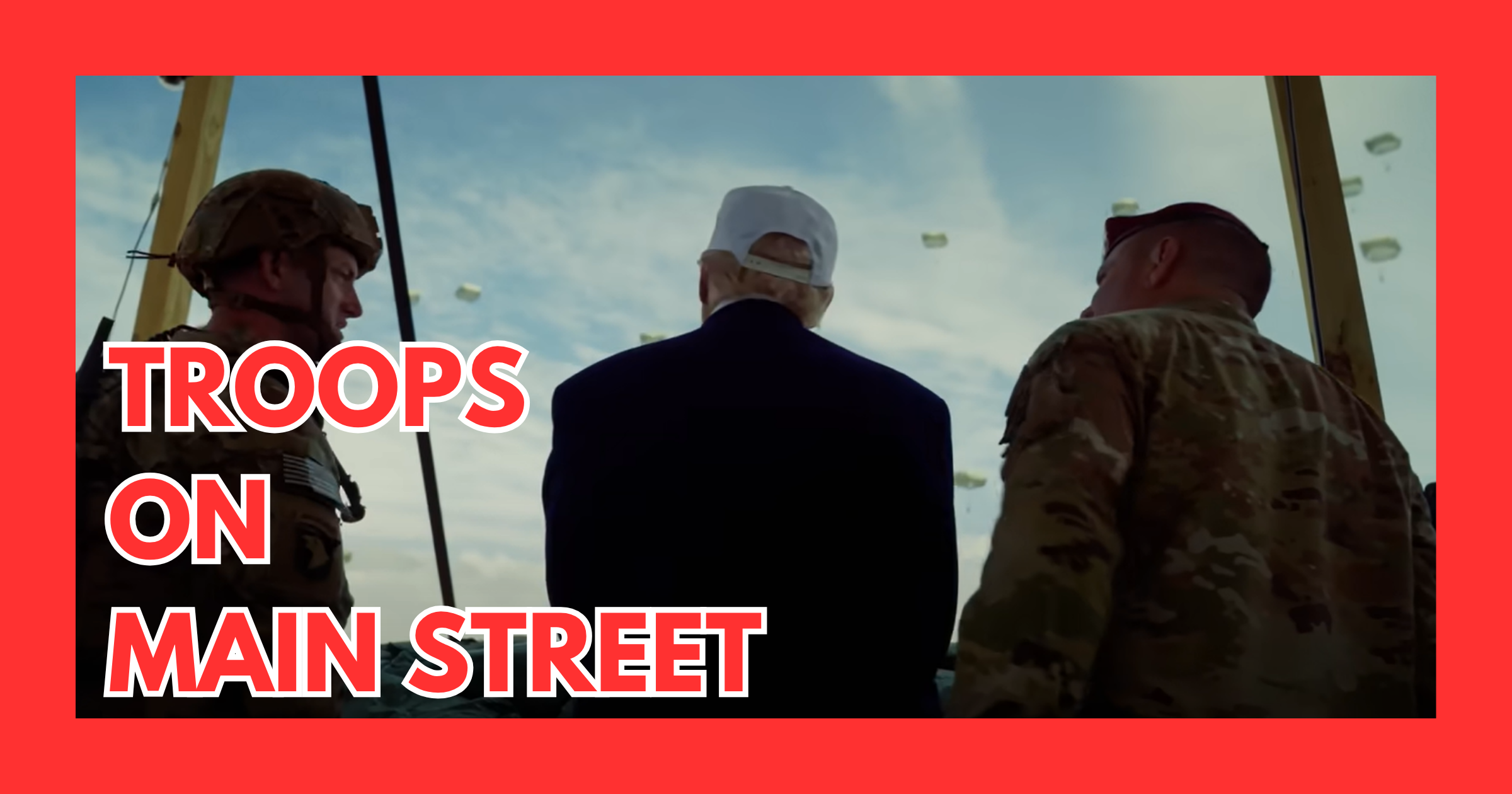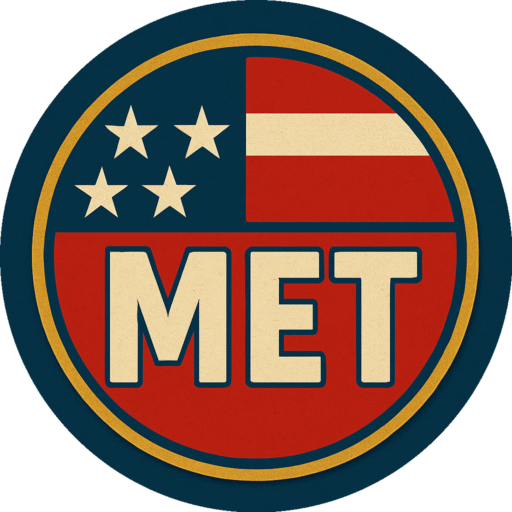
Image Credit: The White House, President Trump Addresses Troops at Fort Bragg CC BY 3.0
Troops on Main Street: From Orchestrated Displays to Citywide Deployment and Parade Plans
The battlefield is no longer the boundary as uniforms move into the public square.
by Met Middleson
June 12, 2025
It began with a National Guard deployment to Los Angeles in response to unrest following immigration raids. That initial wave grew quickly, reinforced by Marines under federal and state coordination. Days later, Donald Trump took the stage at Fort Bragg, delivering a speech that blended military praise with political grievance. Now, preparations are underway for a military parade in Washington, D.C., positioned as both celebration and signal. Each step has been distinct. Together they suggest a shift in how military presence is used and how it’s perceived.
ON THE STREETS OF LOS ANGELES
Tensions flared after ICE raids sparked widespread protests and clashes, including assaults on federal agents in Los Angeles. The historic moment came when President Trump invoked Title 10 authority to federalize roughly 4,000 California National Guard troops under his command, marking the first such federalization without a governor’s consent since the 1960s.
That shift paved the way for the deployment of about 700 active-duty Marines from Camp Pendleton. These Marines joined the Guard on city streets to protect federal buildings and support crowd-control operations, marking an unusual military presence in an American urban setting.
High-profile arrests of individuals accused of violent offenses during ICE actions underscored the intensity of these operations. As federal troops moved in, state leaders led by Newsom challenged the deployment in court, arguing it represented a dangerous overreach.
Each wave added to the next. Protests turned violent, Guard troops were federalized, Marines hit the streets, and high-profile detentions followed. What began as state-managed support quickly evolved into a visible federal operation involving active-duty military, shifting the tone and optics of troop presence at home.
THE STAGE AT FORT BRAGG
At a formal event marking the Army’s 250th anniversary, President Trump addressed active-duty troops at Fort Bragg. During the speech, he praised military service while also criticizing several public officials, including California Governor Gavin Newsom and President Biden. Troops in the audience were heard cheering and booing in response.
According to internal planning documents reported by several outlets, soldiers positioned behind the president were screened in advance, with instructions focused on appearance and ideological alignment. Those who disagreed with the tone or content of the event were given the option not to attend.
In the same speech, the president described protests in Los Angeles as a foreign-style threat and suggested that military intervention may be necessary to restore order. He referenced the possibility of invoking the Insurrection Act and previewed a planned parade in Washington, D.C., where troops would take part in a public celebration of military strength.
No formal orders were issued during the event. The speech was delivered in uniformed surroundings, on a military base, to a screened audience of service members.
PREEMPTIVE POSTURE IN TEXAS
While the Los Angeles deployment responded to active unrest, Texas moved in anticipation of it. Days before planned anti-ICE protests, Governor Greg Abbott ordered more than 5,000 National Guard troops and 2,000 state troopers to strategic positions across major cities. The action was framed as a preventive measure to deter disruption, with forces instructed to assist in keeping the peace.
The deployment did not follow a specific emergency declaration, but it aligned closely with federal immigration operations already underway. Though not coordinated with the White House directly, the scale and language of the order reflected a familiar tone. Protest was treated not just as expression, but as a potential threat to be managed through a show of force.
PLANS FOR PARADE
The event in Washington, D.C. will mark the U.S. Army’s 250th anniversary, Flag Day, and President Trump’s 79th birthday. Organizers expect it to be the largest military parade in the capital since 1991, with approximately 6,600 troops, 150 ground vehicles including Abrams tanks, and 50 aircraft ranging from helicopters to historic warplanes.
Activities will begin with a morning wreath-laying at Arlington National Cemetery and continue through afternoon fitness challenges and equipment demonstrations. The parade is scheduled for 6:30 p.m. along Constitution Avenue, followed by a fireworks display. Security measures will include 18 miles of fencing, 175 metal detectors, airspace restrictions, and street closures throughout the downtown area.
The event is estimated to cost between 25 million and 45 million dollars, with additional funds set aside for vehicle transport and street repairs. Trump first called for a military parade after attending Bastille Day celebrations in France in 2017. A similar effort in 2018 was canceled due to budget concerns.
In advance of the parade, Trump stated that any demonstrations would be met with very big force. “No Kings” protests are expected in cities across the country, although none are currently planned in Washington.
A GROWING PATTERN
Over the span of days, the role of the U.S. military inside the country expands across multiple settings. Troops deploy in Los Angeles to respond to unrest. In Texas, the governor issues a preventive deployment of National Guard troops ahead of planned anti-ICE protests. Marines appear alongside the Guard on city streets in California. Soldiers stand behind the president during a political speech at Fort Bragg. And next, thousands more will march in a planned celebration along Constitution Avenue in Washington, D.C.
Each of these moments stands on its own, tied to specific events, emergencies, or commemorations. Taken together, they reflect a shift. The presence of troops is no longer limited to traditional defense or emergency response. It is increasingly visible, increasingly central, and increasingly symbolic.
From urban deployment to preventive posturing to political staging to national display, the military’s role in public life becomes harder to separate from the narratives surrounding it. The uniforms are not just showing up. They are being seen.



